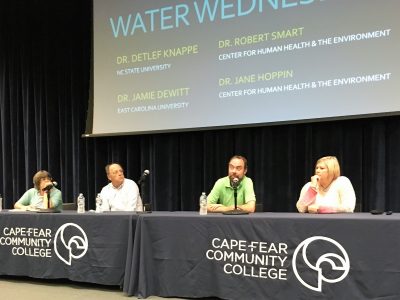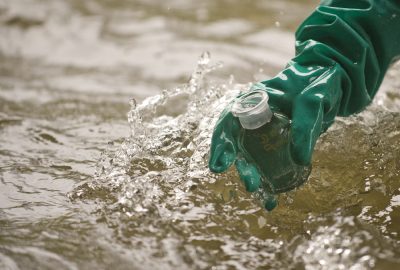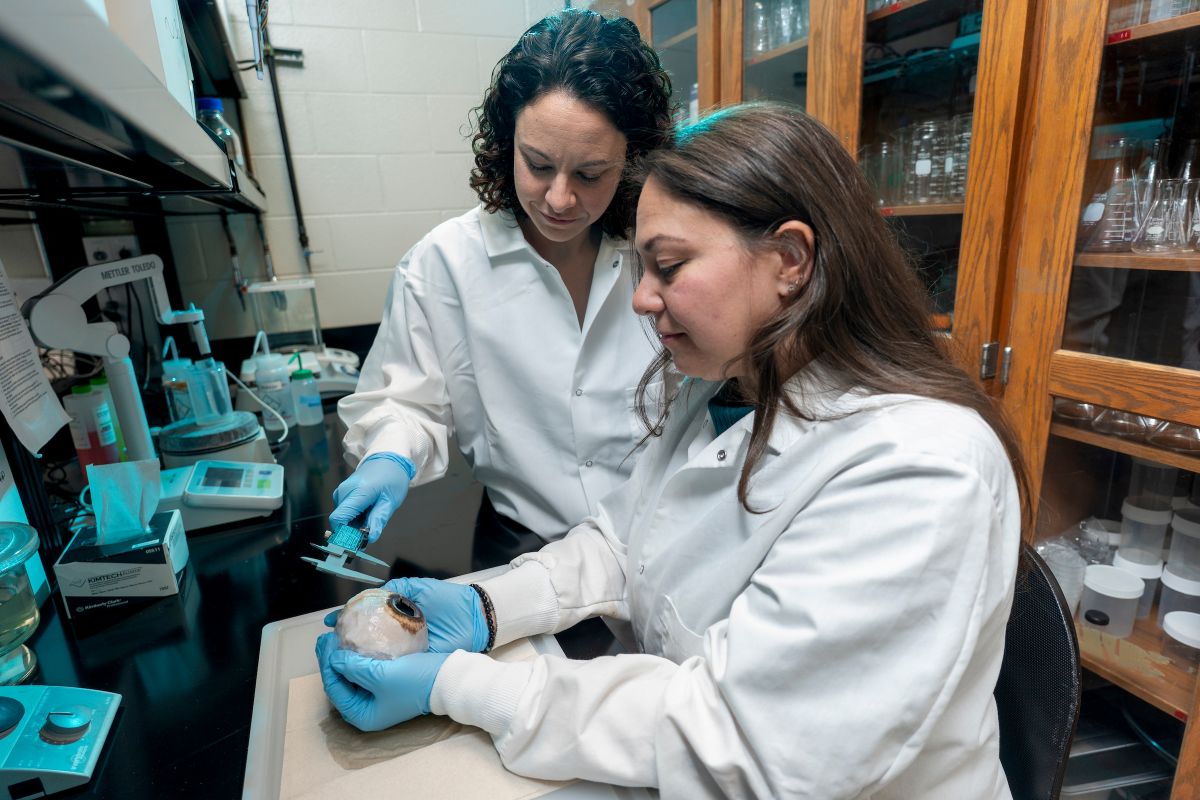WILMINGTON — A panel of scientists familiar with the ongoing issue of GenX and other chemical contaminates present in drinking water answered questions and shared plans for continuing research to about 100 last week during a Water Wednesday hosted by Clean Cape Fear in Cape Fear Community College’s Lecture and Recital Auditorium.

In addition to some preliminary studies conducted in the past two months, the Center for Human Health and the Environment at North Carolina State University announced a grant application to the National Institutes of Health for a larger study to examine the effects of these highly fluorinated chemicals.
Supporter Spotlight
Dr. Detlef Knappe, who was on the team that first detected the presence of GenX and a cocktail of other contaminants in the Cape Fear River and treated drinking water, has been continuing to test water since the news broke in June. He’s also been testing the effectiveness of home filtration systems on removing this class of chemicals, known as PFCs or PFASs, which have been linked to health problems such as kidney and testicular cancer, high cholesterol, decreased fertility and thyroid problems. These chemicals are used in the manufacture of nonstick coating, water repellant fabric and other products.
“It’s the hope that this will help in purchasing decisions and that people can better understand what they’re purchasing,” he said.
He tested water in five homes with reverse osmosis treatment systems, as well as one with a granular-activated charcoal system, and one home with a combination charcoal and ion resin exchange. In general, the reverse osmosis systems, which included Culligan Aqua-Cleer, Kinetico K-5 and APEC RO-45, where effective in eliminating GenX and the other fluorinated chemicals compounds. However, for those who want to get such a system he recommends treating water you drink, rather than a system for a whole house. “We only drink about one percent of the water that comes into our homes,” he said.
Knappe also noted that the levels of GenX have declined in recent weeks, after The Chemours Co., a chemical manufacturer in Fayetteville, said they would stop releasing the compound into the water. Levels are now closer to the current North Carolina Department of Environmental Quality health goal of 140 parts per trillion.
“But they haven’t dropped as much as I would have expected,” he said. “The question is ‘has it stopped or is it sitting in the river basin?’ ” He also said other similar substances occur at much higher concentrations than GenX and that very little is known about these other emerging compounds. “We really need to push beyond GenX and learn what we can about each of these.”
Supporter Spotlight
One reason for this secrecy is the business model behind these chemicals.
“So many of these compounds are proprietary, and are considered confidential business information,” said Dr. Ja

mie DeWitt, a toxicologist with the Brody School of Medicine at East Carolina University. “That’s a challenge for scientists because we have to figure out what these compounds are and what’s the toxicology.”
In her lab, they’ve been testing the effects of GenX compared to PFOA, or C8, for which GenX was meant to replace. They found that GenX, when orally exposed, is toxic for rodents but less toxic for these measures than PFOA.
“The data implies that GenX leaves the body sooner and that it might be less potent,” she said. “But I just looked at a small piece of the pie.”
This work didn’t look other factors such as cancer rates, how long these compounds might stay in humans, or many other health effects. For her, those are the lingering questions. How does GenX, as well as the other emerging chemicals – and the mixtures as they exist in drinking water – influence human health?
A grant proposal to the NIH could help these researchers get some answers. Dr. Robert Smart is director of the Center for Health and Human Environment, which began in 2011 and now has 89 members at state universities and agencies to study, prevent or reduce the adverse impacts of environment factors on human health.
“This would be an epidemiology grant to begin to look at levels of GenX,” he said. “It’s a first step in this process.”
While grant applications can be lengthy and time consuming, this effort would be a time-sensitive one that could be completed in as soon as six weeks, if all goes well.

“Work could begin as soon as a couple of months from now,” he said. “It’s important, relevant work.”
They’re hoping to complete the grant on Aug. 1, said Dr. Jane Hoppin, deputy director for the Center.
“One reason for the urgency is that we don’t want to miss the peak window of exposure. We are trying to position ourselves to better understand these compounds we’re exposed to.”
To address the questions regarding how GenX is stored in the body, the toxicity of GenX, or how long the chemical will remain in the environment, they’re planning a community-based study of Wilmington-area residents who are served by public utility water. They plan to work with the Cape Fear River Watch and the New Hanover County Department of Health to recruit about 400 residents of diverse ages, genders and backgrounds to provide blood, urine and drinking water samples as well as to complete a questionnaire on their water use history. Clinical tests will examine lipid profiles, thyroid function, liver function and urinalysis. Results will be made available to participants and the community, she said.
“We’d also like people to know they can write letters of support,” she said. “We hope that will strengthen our chance of success with the grant.”
Recently, Gov. Roy Cooper announced a partnership of further study of GenX and other compounds with the Centers for Disease Control, who said they’d work on long-term exposure studies.
“The CDC has a lot of resources,” Hoppin said. The exposure modeling and the community study could both provide different pieces of this puzzle. “We’re hoping that this work will complement what the CDC is doing.”







